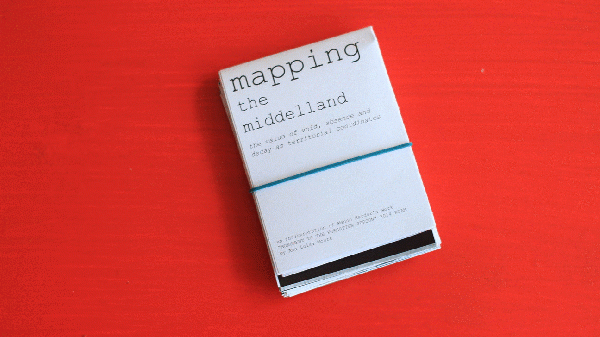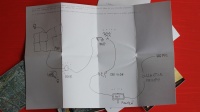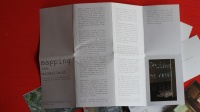User:Luisa Moura/thematic/trimester I: Difference between revisions
Luisa Moura (talk | contribs) No edit summary |
Luisa Moura (talk | contribs) No edit summary |
||
| (9 intermediate revisions by the same user not shown) | |||
| Line 1: | Line 1: | ||
[[File:LMoura_Menno.gif|600px]] | |||
' | |||
[[File:LMoura_documentation-2.jpg|200px]][[File:LMoura_documentation-3.jpg|200px]][[File:LMoura_documentation-4.jpg|200px]] | |||
<div style='font-family:Courier,Sans;font-size:12px;'> | |||
--'Monument to the Forgotten Person'-- | |||
documentation on the work developed by Menno Harder, 2014 | documentation on the work developed by Menno Harder, 2014 | ||
Menno’s research on the | Menno’s research on the Middelland seemed to be done in a pretty sensorial way.He was trying to grasp his living environment by walking back and forth, by photographing and drawing details, by reflecting on his perception of the neighborhood identity, by mapping the streets by themes, by gathering other people’s memories. | ||
The identity of the place appeared to be a puzzle, or very hard to understand.There was a big detachment between the | The identity of the place appeared to be a puzzle, or very hard to understand.There was a big detachment between the neighborhood and its inhabitants (…)The space, the street, the diversity and heterogeneity of the commerce, was not binding the inhabitants together as much as it could be. The idea of stimulating, organizing and taking part on community experiences started to grow in Menno's mind. | ||
| Line 19: | Line 24: | ||
(…) But suddenly the attention shifted from the house to the finding of a corpse in the | (…) But suddenly the attention shifted from the house to the finding of a corpse in the neighborhood, unnoticed for 10 years. For a while this event gathered the attention of everyone and the forgotten person became the embodiment of the communal ideal that Menno was feeling the lack of. | ||
The squatting group planed to set up a memorial for this person in the Middellandplein. The memorial would be a single stone reminding people how forgetfulness could be wicked (…) what is the actual value of the monument? Freezing a particular public concern into a unique symbol: source of reflection, common | The squatting group planed to set up a memorial for this person in the Middellandplein. The memorial would be a single stone reminding people how forgetfulness could be wicked (…) what is the actual value of the monument? Freezing a particular public concern into a unique symbol: source of reflection, common ground and neighborhood identity. | ||
Latest revision as of 17:35, 28 June 2014
--'Monument to the Forgotten Person'--
documentation on the work developed by Menno Harder, 2014
Menno’s research on the Middelland seemed to be done in a pretty sensorial way.He was trying to grasp his living environment by walking back and forth, by photographing and drawing details, by reflecting on his perception of the neighborhood identity, by mapping the streets by themes, by gathering other people’s memories.
The identity of the place appeared to be a puzzle, or very hard to understand.There was a big detachment between the neighborhood and its inhabitants (…)The space, the street, the diversity and heterogeneity of the commerce, was not binding the inhabitants together as much as it could be. The idea of stimulating, organizing and taking part on community experiences started to grow in Menno's mind.
(…) At the same time that this feeling of community incompleteness was taking shape, an abandoned house, in front of Menno's place, started to embody the potential for this new public realm (…)New community experiments couldn't simply take place in the existing urban structure. It was not inviting for any sort of gathering.
Permanently surveyed, individuals look suspiciously at each other on the streets and we can easily get a feeling that something wrong can happen at any moment. The empty house represents the potential of non-mapped territory to shelter change, growth and public longing.
(…) But suddenly the attention shifted from the house to the finding of a corpse in the neighborhood, unnoticed for 10 years. For a while this event gathered the attention of everyone and the forgotten person became the embodiment of the communal ideal that Menno was feeling the lack of.
The squatting group planed to set up a memorial for this person in the Middellandplein. The memorial would be a single stone reminding people how forgetfulness could be wicked (…) what is the actual value of the monument? Freezing a particular public concern into a unique symbol: source of reflection, common ground and neighborhood identity.
The forgotten woman seems to represent an emotional void, offering the space for new meanings that Menno was looking for, in the same way the forgotten house could offer physical room for it.
The un-mapped human being makes us reflect on our own social mapping and the incredible event of the found corpse is more than just chocking news (…) What matters is that these fields of void appear to be those that allow our public realm to breath and expand.
It seems like Menno is guiding his research from the house to the woman by their relationship with death and deterioration; like two different elements that are equally asking to be rescued. The house asks for renovation and re-use, the woman asks for recognition. He is looking at these two elements precisely for their incomplete nature.
The squatted house, the deceased woman and the broken language of Menno’s final installation are three forms of 'noise' and as such they offer room for reinterpretation, reuse and broadening of our perception. All three represent tools of territorial research; as dots of exception they become coordinates.




